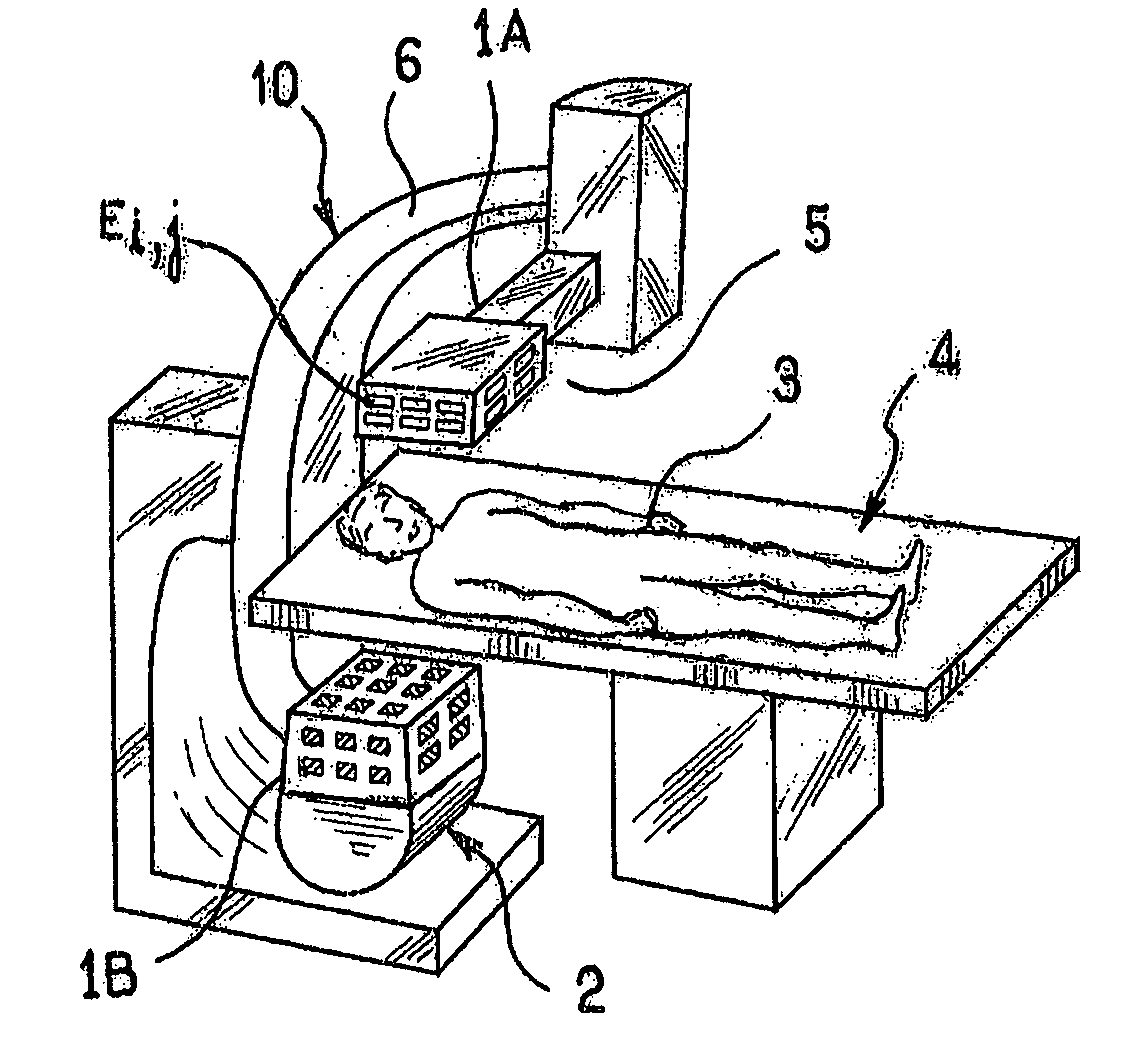Proximity detector comprising capacitive sensor
- Summary
- Abstract
- Description
- Claims
- Application Information
AI Technical Summary
Benefits of technology
Problems solved by technology
Method used
Image
Examples
Embodiment Construction
[0049]There will now be described, with reference to FIG. 1, an embodiment of proximity detectors according to the invention in an X-ray radiology machine for a vascular positioner.
[0050]A first proximity detector (1A) is arranged inside an X-ray detector device (5) fitted to a radiology machine (10), and comprising several antennas lining five of the internal or external walls of the cap of the X-ray detector, each antenna comprising a plurality of electrodes Ei,j. A second proximity detector (1B) is arranged on the inside surface of the X-ray emitter device of the machine (10). The X-ray emitter device (2) and the X-ray detector device (5) are installed at the two ends of a C-shaped moving part rotating around an examination table (4) on which a patient (3) is lying.
[0051]By reference to FIG. 2, a proximity detector according to the invention 1 comprises an antenna 20 arranged on the inside surface of the cap 22 and the side faces 21, 22. The antenna 20 is constituted by a plurali...
PUM
 Login to View More
Login to View More Abstract
Description
Claims
Application Information
 Login to View More
Login to View More - R&D
- Intellectual Property
- Life Sciences
- Materials
- Tech Scout
- Unparalleled Data Quality
- Higher Quality Content
- 60% Fewer Hallucinations
Browse by: Latest US Patents, China's latest patents, Technical Efficacy Thesaurus, Application Domain, Technology Topic, Popular Technical Reports.
© 2025 PatSnap. All rights reserved.Legal|Privacy policy|Modern Slavery Act Transparency Statement|Sitemap|About US| Contact US: help@patsnap.com



